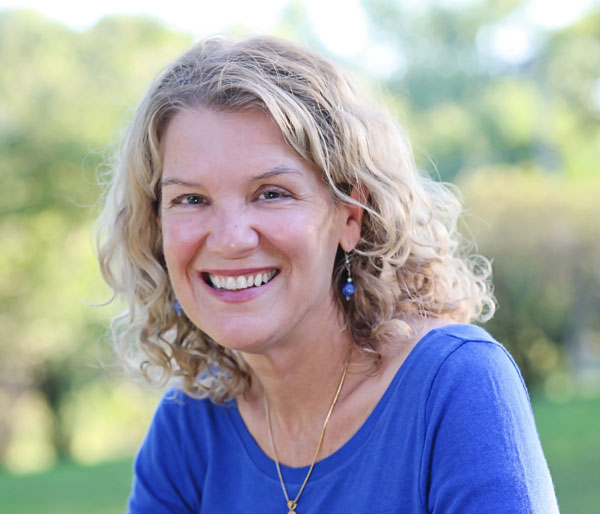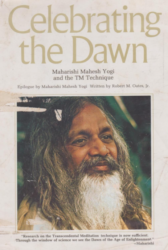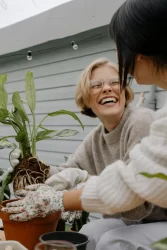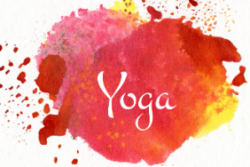Creativity and Consciousness: An Interview with Author Linda Egenes

Linda Egenes is the author of more than 500 articles and six books, and with Kumuda Reddy, M.D., she has co-authored three books on preventive health care, including Super Healthy Kids and For a Blissful Baby. A practitioner of the Transcendental Meditation technique since 1972 and a certified teacher, she is adjunct faculty at Maharishi University of Management in Fairfield, IA, where she lives with her husband, Dr. Thomas Egenes. She has been a featured writer for the tm-women.org blog since it launched three years ago, and you can read her posts here.
Recently I interviewed Linda about creativity, consciousness and her latest book.
Kathy Connor: When did you first think of yourself as a writer or a creative person?
Linda Egenes: I was lucky because I grew up in a home where creativity was cherished, and I was encouraged by both my parents to use my creativity in any way I could—to draw, sew, make homemade gifts, and write stories. My parents taught me by example that anything I wanted to create, I could. My father was a product engineer with 22 patents, and designed and built our beautiful passive solar home made of all natural materials in 1959. He and my mother also created over fifty beautiful flower gardens on the woodland acreage surrounding our home.
In later years, I asked my father, “How did you know how to build a house?” He said, “I saw it in my mind first and then I created it.” He would tell younger engineers, who asked him where he got his ideas, “Just put something down on paper.” In other words, just start the creative process and let it flow. I find all of this advice to be extremely helpful to me as a writer, and I think of my father’s words every morning when I face a blank page.
KC: You were lucky to have such a creative role model in your father. Do you feel that everyone is creative, or is creativity something that only a few people can cultivate?
LE: I would say absolutely, every person is by nature creative. We all have an infinite reservoir of creativity, intelligence, and happiness inside us. You can see this in children. Every child’s life is a constant hubbub of creativity—they’re drawing and painting and writing and learning and exploring.
And I personally feel that we could learn from children that creativity doesn’t have to be a grand gesture. It’s more a way of life. Every person, whether she’s a housewife creating something of beauty, or is working as a businesswoman or a scientist in a lab, is using her creativity. Anyone who has an idea or a vision of possibility on the inside and then creates that in real life is living a creative life.
KC: It seems to bubble up from within. You often hear songwriters say a thought came and then the whole song came with it. An idea takes shape in the quiet area of the awareness and then it takes form.
LE: Yes, that’s a beautiful way to describe the creative process. I know as a child I had the notion that creativity comes from within, that everything I needed came from within me. But I didn’t have a systematic way to access that.
So when I would sit down to write, for instance, it would take a really long time to actualize my thoughts on paper. There was a lot in the way—fatigue or stress or just foggy thinking.
And then, fortunately for me, when I was 19 years old, I started the Transcendental Meditation technique. It was a big change, because now I could think and write without having that kind of fog or interference.
It didn’t happen overnight, but as I continued practicing TM twice a day, my mind got clearer and clearer until now, I don’t experience writer’s block. I can turn on the flow of words whenever I sit to write.
KC: Your experience reminds me of something film director David Lynch so beautifully expressed in his book Catching the Big Fish. He wrote, “Inside every human being is an ocean of pure, vibrant consciousness. When you ‘transcend’ in Transcendental Meditation, you dive down into that ocean of pure consciousness. You splash into it. And it’s bliss. You can vibrate with this bliss. Experiencing pure consciousness enlivens it, expands it. It starts to unfold and grow . . . you can catch ideas at a deeper level. And creativity really flows. It makes life more like a fantastic game.”
LE: That’s beautiful.
KC: And would you say this is not a mood or an attitude on your part—through regular transcending, it’s become part of your physiology now, to think clearly and to access your own creativity in an effortless way?
LE: Yes, it’s not a mood or an attitude. That’s my experience, and scientific research shows us that people like me who perceive a dramatic improvement in creativity are experiencing a measurable change that is real and concrete. For instance, the Journal of Creative Behavior shows that there is increased creativity in individuals who practice TM in comparison to controls.
Also, researchers Fred Travis, Ph.D, and Yvonne Lagrosen, Ph.D., have studied the brain wave patterns of top athletes and highly creative people and found that their brains are functioning in a more holistic way. And they report seeing these same patterns in brain functioning of people who practice the Transcendental Meditation technique—that the whole brain is engaged and enlivened and alert and starts to function in harmony with every other part of the brain. This is a unique quality of TM not found in other meditation techniques—this state of holistic brain functioning that is also found in highly creative people.
KC: I understand you have a new book out. Do you want to tell us about it?
LE: My co-author, Dr. Kumuda Reddy, and I have just come out with The Ramayana: A New Retelling of Valmiki’s Ancient Epic—Complete and Comprehensive (TarcherPerigee). The Ramayana is the most widely read epic in the world today, considered a spiritual guide by over one billion people in India, Nepal, Thailand and Bali.
Although it’s the oldest epic on earth, it’s a wonderful story for our modern times, because it features two enlightened people who, even though pressed to their limits, exhibit ideal qualities of kindness, compassion, tolerance and forgiveness to every person they meet. In one of our books, Super Healthy Kids: A Parent’s Guide to Maharishi Ayurveda, Kumuda and I mentioned that children need healthy role models. The Ramayana provides those role models for children and adults alike.
KC: I’ve tried to read these traditional stories to my grandkids, and sometimes when you’re reading a direct translation it’s gets too long. How is yours different?
LE: This version is much shorter, and our idea was to use a novelistic format but still retain the underlying wisdom of the original. While this version is written for adults, it is a great read-aloud story for the whole family. Children are enticed by the charming and beautiful story, but at the same time absorb the underlying truths that unfold in layers of meaning and feeling. That was my experience, and I hope it is our readers’ too.
Listen to Kathy Connor’s radio interview “Meditation and Creativity” with Linda Egenes.
About the Author
Kathy Connor is the Director of the TM Program in Fairfield County, CT, and has been teaching TM for over 40 years. She also works for the David Lynch Foundation program to teach TM to veterans suffering from PTSD. She hosts a monthly radio show, Kathy’s Corner at WPKN FM.





